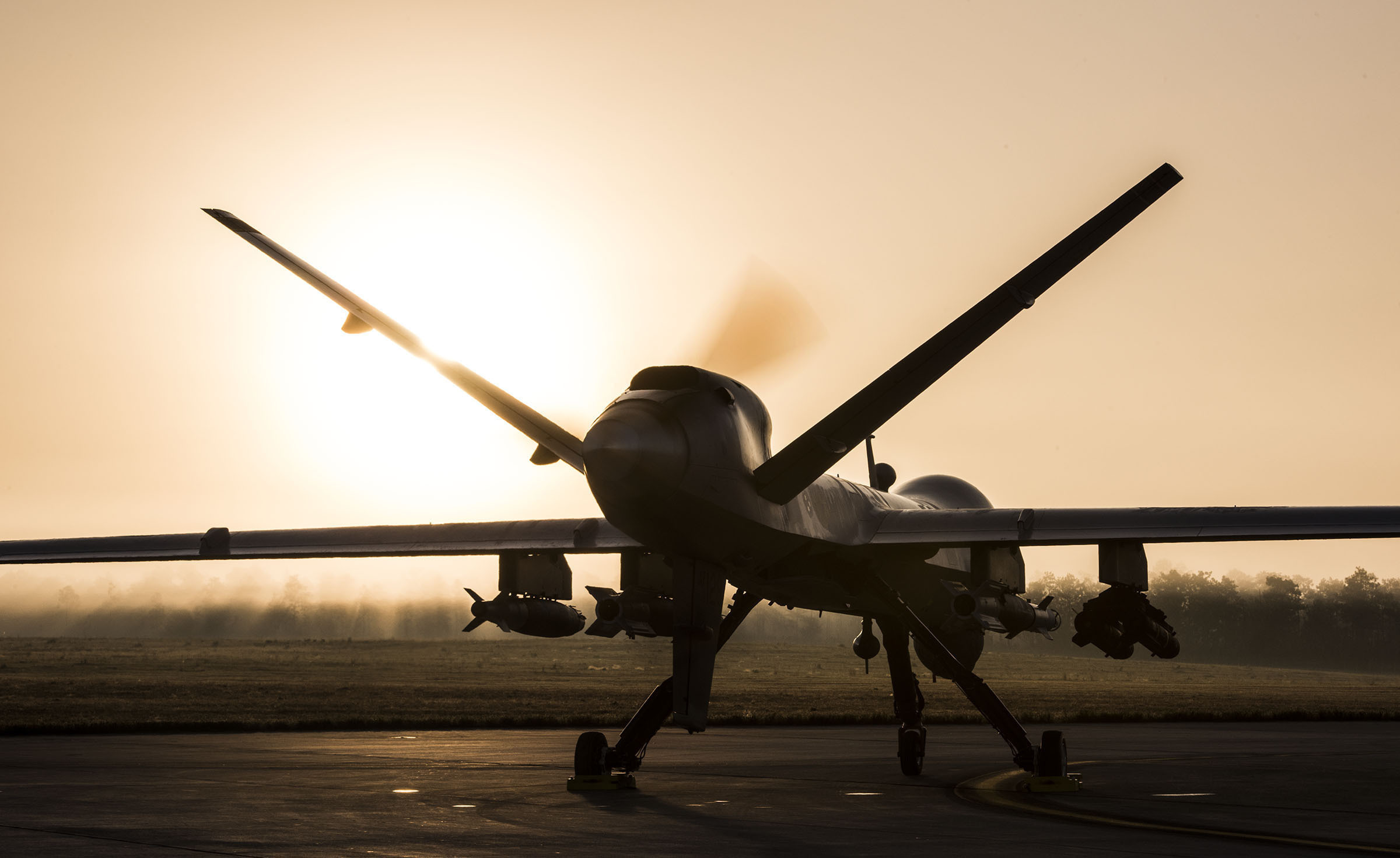

U.S. forces struck a group trying to launch an attack drone in Iraq on Tuesday, the first U.S. use of force in the country since February. The attack was sandwiched between a high profile Israeli airstrike in Beirut and the assassination of a senior Hamas leader in Tehran.
U.S. forces targeted “combatants” who were attempting to launch one-way attack uncrewed aerial systems, or OWAUAS, in Musayib, a town in Iraq’s Babil Province just south of Baghdad, a defense official told Task & Purpose.
conducted a “defensive airstrike” on Tuesday in
“Based on recent attacks in Iraq and Syria, U.S. Central Command assessed that the OWAUAS posed a threat to U.S. and Coalition Forces,” the defense official said. “This action underscores the United States’ commitment to the safety and security of our personnel. We maintain the inherent right to self-defense and will not hesitate to take appropriate action.”
Iraqi police told Reuters that the airstrike killed four members of the Popular Mobilization Forces, or PMF, a group of Iranian-backed militias that are nominally under the control of the Iraqi government, but many have ties to Iran’s Islamic Revolutionary Guard Corps, or IRGC.
Subscribe to Task & Purpose today. Get the latest military news and culture in your inbox daily.
Following Hamas’ Oct. 7 attack on Israel, Iranian proxies throughout the Middle East launched attacks on U.S. troops in the region. Three Army Reserve soldiers were killed in a Jan. 28 drone attack against a U.S. base in Jordan.
There had been a lull in the attacks since April, but U.S. troops in Iraq and Syria have come under rocket fire at least five times in July. Separately, U.S. forces also destroyed a drone in Syria, but it is unclear what the drone’s target was.
A July 25 rocket attack on Al Asad Air Base in Iraq came after meetings in Washington, D.C., about the future U.S. and coalition military presence in Iraq, noted Jonathan Lord, director of the Middle East Security program at the Center for a New American Security think tank in Washington, D.C.
The attack on Al Asad Air Base may have been a signal from Kataib Hezbollah, an Iranian-backed militia, that it was unhappy that the talks in Washington ended without an announcement on whether U.S. troops would stay in Iraq, Lord told Task & Purpose.
It is also typical for Iraqi politicians to call for a U.S. withdrawal from their country after a self-defense airstrike, such as Tuesday’s, Lord said.
“Iran-centric political factions in Iraq will use the US strike as a pretext for outrage and press Prime Minister Sudani harder to end the U.S. military presence,” Lord said.
The recent increase in attacks on U.S. troops in Iraq and Syria comes as the war between Israel and Hamas has reached a particularly dangerous inflection point. A July 27 missile attack on the Druze town of Majdal Shams in the Israeli-controlled Golan Heights killed 12 children. Israel has blamed Hezbollah, which has denied any involvement in the attack.
On Tuesday, Israel carried out an airstrike in Beirut that killed Fuad Shukr, a senior Hezbollah commander who “played a central role” in the Oct. 23,1983 attack on U.S. Marines in Beirut that killed 241 American troops, according to the U.S. Justice Department, which had offered a $5 million reward for information about him.
Shortly after Shukr’s death, Hamas’ political leader Ismail Haniyeh was killed by an airstrike in Tehran. It is unclear which country carried out the strike. The Israeli government has declined to comment about it.
Following an April 1 Israeli airstrike in Damascus that killed senior IRGC leaders, Iran launched a missile and drone attack on Israel. U.S. forces helped defend against the attack by shooting down four ballistic missiles and more than 70 drones.
